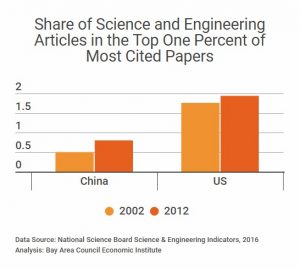Acknowledgments
This report was prepared by Sean Randolph, Senior Director at the Bay Area Council Economic Institute. Alice Bishop, Research Analyst at the Economic Institute, and Sebastian Hamirani, an intern from California Polytechnic State University–San Luis Obispo, contributed to the research. The Economic Institute wishes to thank the sponsors of this project, whose support enabled its development: Lead Sponsors HSBC and Microsoft; and Supporting Sponsors Deloitte and Silicon Valley Bank. We also wish to thank the advisers for this report, who provided early guidance and reviewed its working draft, and also the many contributors who provided information and insight. They are listed in the Appendix.


